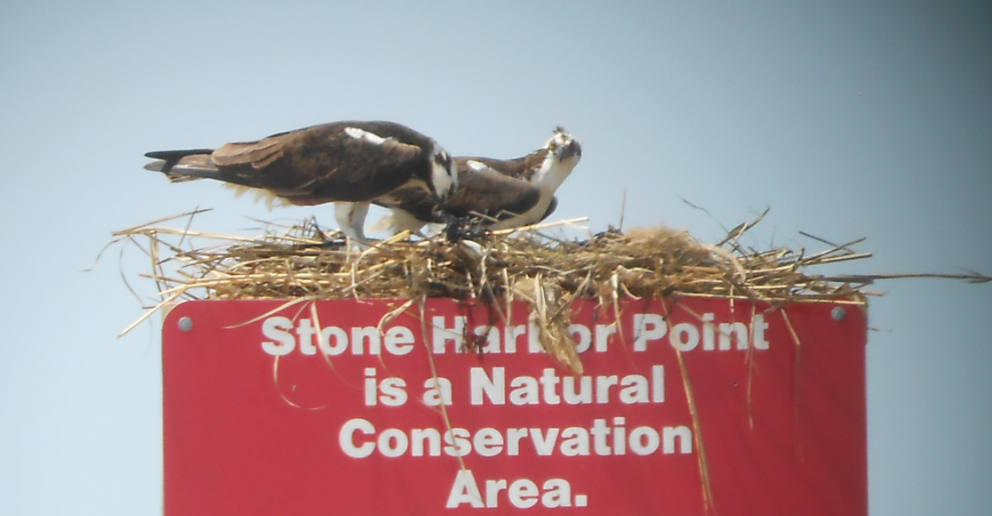Monitoring of beach habitat, coastal resiliency project in Cape May County continues

An osprey nest on a sign posted at the entrance to Stone Harbor Point. (Image: The Wetlands Institute)
An environmental organization continues to monitor enhancements to a designated beach conservation area providing habitat areas for migratory birds in Cape May County.
Stone Harbor Point, a designated conservation area at southern end of Seven Mile Island in Cape May County, is well-regarded for its serene coastal environment representatives of what the Jersey Shore looked like prior to development, similar to Long Beach Island’s Holgate and Island Beach State Park.
It provides a habitat for beach-nesting (Piping Plovers, American Oystercatchers, Black Skimmers, Least Terns) and migratory shorebirds (Red Knot, Semipalmated Sandpiper, Sanderling, Semipalmated Plover, Black-bellied Plover), according to the New Jersey Audubon Society.
Thanks to work completed in 2015 courtesy of a $1.2 million National Fish and Wildlife Foundation grant, the area is even more welcoming for wildlife and enhances the shielding of the nearby developed areas of Stone Harbor against coastal storms.
According to a Stone Harbor news release, beginning in 2015, crews transferred more than 50,000 cubic yards of sand from the southern end of point near Hereford Inlet to construct elevated habitat areas for the birds. The work was done by local harvesting and without dredging or truck sand deliveries.
Specifically, according to the borough, the upper two feet of sand from just about the high tide line was used to construct three small platforms that rise above the spring tide flooding elevations. Crews then sculpted the platforms into a natural-looking beach feature.
To enhance protection to Stone Harbor from southerly approaching storms, workers fortified an existing dune but still kept an opening to allow for permitted vehicles to access the area, where seasonal fishing is permitted.
Crews had to reenter the area in 2016 for repair work after it suffered damage from coastal storms. The New Jersey Audubon Society says it continues to monitor the birds and the habitat.
“Through monitoring, we are documenting any biological impacts of sand harvesting on intertidal invertebrate communities to determine if this method is an ecologically sound approach for protected wildlife areas,” Nellie Tsipoura, Ph.D., Senior Research Scientist & Director of Citizen Science for New Jersey Audubon, said in a news release. “We are also monitoring beach nesting birds, such as Piping Plover, American Oystercatcher, Least Terns, and Black Skimmer, to determine whether elevated habitats have resulted in decreased nest flooding and increased nesting and fledgling success.”
In addition to the New Jersey Audubon Society, the project is collaborative effort with The Wetlands Society, Conservation Wildlife Foundation of New Jersey, the New Jersey Division of Fish and Wildlife, and the Borough of Stone Harbor.
WHYY is your source for fact-based, in-depth journalism and information. As a nonprofit organization, we rely on financial support from readers like you. Please give today.

